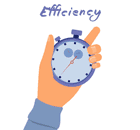12 Main Changes Made in the Scrum Latest Guide 2020
2020 Scrum Guide is the 6th and the latest version of Scrum Guide, which focuses on simplifying the framework to make it more useful and effective for teams.

After every few years, the Scrum creators Jeff Sutherland and Ken Schwaber update the Scrum Guide to make some changes in it based on the feedback received from the people using it. The latest version of Scrum Guide was dropped at the end of 2020. The main goal of the 2020 Scrum guide is to make the framework more simplified and reduce/remove unnecessary parts. In this article, we will have a closer look at the main changes made in the 2020 Scrum Guide.
Scrum Guide - Brief Overview
Scrum is a framework that assists in developing complex products and making them sustainable. Scrum Guide is an official guide that presents the most used agile framework. The guide is meant to assist organizations, teams, and individuals in practicing adaptive solutions to complex products. The 2020 Scrum Guide is the 6th edition so far. In the past, the guide was updated in 2010, 2011, 2013, 2016, and 2017.
12 Main Changes Made in 2020 Scrum Guide
Jeff Sutherland and Ken Schwaber have made several changes in the 2020 Scrum Guide. The first one you will notice is that the number of pages reduced to 13 from 19. Here is the comprehensive look at all the 12 main changes made in the 2020 Scrum Guide:
1. "Role" Changed by "Accountabilities"
In the past guides, the Scrum roles were being misunderstood as job titles. However, roles were never meant to reflect any title. The purpose of the role is to define who is accountable for what. For example, a Scrum Master does not have to give himself a title of "Scrum Master" in the resume, as the project manager can also serve as the Scrum Master if he follows the role description provided in the Scrum Guide. So, the authors wanted to clear out that the "role" and "title" are not the same thing. That's why the latest guide replaces the word "role" with "accountabilities".

Async Poker for Jira

Sync Poker for Jira
So, instead of saying "Scrum Master role is", the phrase makes more sense by saying "Scrum Master is accountable to". Therefore, you will see the word "accountable" a lot in the new Scrum guide.
2. Change of Scrum Master from "Servant Leader" to "True Leader"
When referring to Scrum Masters, the previous versions of Scrum Guide reflected him as a "servant-leader" in order to present the leadership style that serves the Scrum Team effectively. However, the 2020 Scrum Guide has changed the phrase to "true leader who serves the Scrum Team". This change is meant to remove the misconception of "servant" and also clearly narrate the purpose and accountabilities of Scrum Masters.
However, you should not confuse the meaning of "true leader" with the management of the Scrum Team. True leader means the Scrum Master is accountable to lead the team for better performance. You can understand it with the help of a captain in a sport's team. The role of the captain is not to manage the team, but to present himself as a leader to ensure that the team performs well. That is exactly what a Scrum Master has to achieve.
3. Three Questions in Sprint Planning
Previously, the Sprint Planning was based on two questions, i.e., what to achieve and how to achieve. In the 2020 Scrum guide, there is a third question added referring to the Sprint Goal, i.e., why to achieve. This new question targets the goals of the present Sprint that must be cleared during the planning session and kept in mind during the whole Sprint session.
4. Commitments in Scrum Artifacts
The 2020 Scrum Guide does not add new artifacts to the framework, which means there are still three artifacts, i.e., Sprint Backlog, Product Backlog, and Increment. But now each artifact comes with a "commitment" to make sure that they deliver the information that improves focus and transparency against which the progress can be evaluated. For example, "Product Goal" is the commitment for Product Backlog, "Sprint Goal" is the commitment for Sprint Backlog, and "Definition of Done" is the commitment for Increment. These commitments are meant to reinforce Scrum values for both the stakeholders and Scrum Team.
5. The Concept of "One Team"
In early versions, the Scrum Guides were presenting two teams, i.e., the "Scrum Team" (which includes the Scrum Master, Development Team, and Product Owner) and the "development team" (which includes the members that are doing to work). This gives a sense of a "team within a team". So, the 2020 Scrum guide now presents only one team, the Scrum Team, while it provides a separate set of accountabilities to Scrum Master, developers, and Product Owner. For example, the Scrum Masters are accountable for setting up Scrum as presented in the Scrum guide. Similarly, the Product Owner is accountable for the management of the Product Backlog effectively.
6. Self-Organizing Changed to Self-Managing
In the past, Scrum Guides use to refer to development teams as "self-organizing". It was meant to reflect that the development teams get to pick who performs the task and how. Since 2020 Scrum Guide is merging the development team into one comprehensive Scrum Team, so it now focuses on "self-managing" Scrum Team. It reflects that a Scrum Team gets to pick what to work, who will work, and how to complete.
7. Less Prescriptive and Simplified
The 2020 Scrum Guide is a lot easier to understand compared to the past versions. The authors have emphasized reducing the description to the framework and discussing core elements only. In addition, many complex and redundant statements are also removed. There were many descriptions in the guide that were continuously causing confusion or difficulty for new teams to get a grip with Scrum. That's why the page count is reduced to 13 pages only, while many definitions are now explained in a brief and easy-to-understand way.
8. Product Owner Leading the Sprint Review
The past guides have enabled the Product Owner to play the leading role in the Sprint Review and made the remaining Scrum Team only play the supportive role. However, the 2020 Scrum Guide makes the whole Scrum Team, including stakeholders and customers, at the center during the Sprint Review session.
9. Focus on Product Goal
The 2020 Scrum Guide talks a lot about "Product Goal", which was missing in the previous versions. Product Goal presents the long-term objective/target for the Scrum Team that reflects the future state of the product. We can see that the guide is talking about the Product Goal in Sprint Planning, Sprint Review, Product Backlog artifact, Scrum Master role, and many other places. The more emphasis on Product Goal is because it helps Scrum teams to have a clearer view of the objectives they have to achieve and plan things accordingly.
10. Removal of Daily Scrum Three Questions
The Daily Scrum is a time-boxed 15-minute event that the development team conducts every day during the Sprint to plan the work for the next 24 hours. In the 2017 Scrum Guide, you can see the guide narrating three questions that a team can use in Daily Scrum, such as what did I do yesterday, what will I do today, and do I find any obstacles towards fulfilling Sprint goal.
However, these questions are now removed from the 2020 Scrum Guide because they were limited and extra prescriptive. Since the Daily Scrum goal is to evaluate the progress towards achieving Sprint's main targets, so the event should not be confined to those three questions.
11. Change in "Parking Lot" Approach
If a team finds some important point of discussion during Daily Scrum that needs to be discussed in-depth, then the conversation is held after the Daily Scrum, referred to as the parking lot. As per past guides, the parking lot should take place right after the Daily Scrum. However, the 2020 Scrum Guide removes this necessity to conduct parking lot discussions immediately after the Daily Scrum. So, now teams can decide what time they want to schedule for the in-depth discussion on those points.
12. No Use of the Word "Estimate"
If you look at the 2017 Scrum Guide, you will find that it mentions a lot about the estimate of Product Backlog, who should estimate, and similar other details. It does not highlight any specific technique to do the estimates, such as Planning Poker, Async Poker, Dot Voting, etc. But the scenario is shifted in the 2020 Scrum Guide. Despite the importance of estimation in the whole agile framework, the latest Scrum Guide no longer uses the word estimate. Although Scrum values the importance of estimates, the new guide is emphasizing more on letting the Scrum Team focus on achieving their goals.
Final Thoughts
If we closely look at all the main changes in the 2020 Scrum Guide, it can be noticed that the new version of the guide does not require teams to change the way they run Scrum currently. They might just have to use different terms or answer questions a bit differently, but there is no such big framework change they need to adopt. Overall, the 2020 Scrum Guide has become a lot more reader-friendly, to-the-point, and focused.




